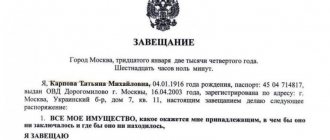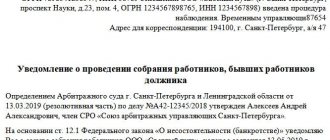Bankruptcy is a state of financial insolvency of an organization in which the enterprise is unable to pay loan obligations.
They arise before banks, individuals, and other financial institutions. How to check the bankruptcy of a legal entity is an important question when you need to make sure of its solvency. This is necessary, for example, when cooperation arises between legal entities.
On the concept of bankruptcy of a legal entity
The financial insolvency of a legal entity has a very specific meaning - the inability to fulfill financial obligations. Meanwhile, the types of insolvency are:
- Planned bankruptcy. This means that the company foresaw its financial insolvency and planned to declare bankruptcy on its own with the onset of force majeure.
- Fictitious - when a company declares itself bankrupt, but itself has the means to cover its debts. The head of the company or its owner provides deliberately false information about the financial condition of the enterprise.
- Deliberate bankruptcy – occurs when a company’s funds or property are stolen, as a result of which its financial position worsens. There are cases when a manager deliberately brings a company to a state of insolvency in pursuit of his goals.
The last 2 types are considered by law to be criminal acts and may entail administrative or criminal prosecution depending on the severity of the act. Enterprises that experience financial difficulties in fulfilling obligations to creditors declare planned bankruptcy.
Signs of a company's insolvency are manifested in the fact that they lack the funds to fulfill financial obligations to creditors. Similar to the general requirements for declaring bankruptcy, the plaintiff applies to the Arbitration Court when the debt has reached the amount of 100 tr. however, the company's assets may be greater than what creditors require.
When a court declares a company bankrupt, its activities cease. Information about it is excluded from the unified register of legal entities, and outstanding debts are written off. All decisions of the arbitration court in relation to the bankrupt relate only to the assets of the enterprise.
As a result of the execution of the court order, employees should not suffer from the company being declared bankrupt: their own property remains inviolable, employees’ wages are paid in full.
The risk of being declared bankrupt is that the situation of insolvency is not expected by the owner. This does not mean that it falls out of the blue. The prerequisites for bankruptcy could be traced, but the manager had no idea how serious it was. Alternatively, the deprivation of funds could occur suddenly as a result of the theft of company funds, an increase in lending rates, changes in the exchange rate, a force majeure situation, and other things.
What resources can you use to get information about an organization’s bankruptcy for free:
- ]]>Unified Federal Register of Bankruptcy Information]]> provides users with prompt and reliable information about bankrupt companies. A legal entity will be included in the resource database from the day the bankruptcy proceedings are opened. It also contains information about bankruptcy of individuals.
- ]]>Card index of arbitration cases]]> provides information on the bankruptcy of legal entities by TIN or OGRN and the name of the organization. In addition to bankruptcy cases, the database contains numbers of all court proceedings in which a specific organization acts as a defendant or debtor.
- ]]>Federal Tax Service website]]> provides basic information about the business entity, including the date of termination of activity and invalidation of registration.
- The website of the Kommersant newspaper publishes messages about the bankruptcy of legal entities. By Order of the Government of the Russian Federation dated July 21, 2008 No. 1049-r, the publication is officially authorized to publish reports of insolvency. In the search bar, just enter the subject's TIN. If information about his bankruptcy is in the site’s database, the system will automatically provide the necessary information.
The above services will help you assess the state of affairs of a potential business partner and find out about the bankruptcy of a legal entity. Information about organizations is updated regularly. If necessary, you can get a printout of the site page.
The only disadvantage of using online services is that information on them will be published only after legal proceedings are opened against the company or it is declared bankrupt. But real problems with solvency may arise much earlier.
What does the legislation say about bankruptcy of legal entities? faces?
The Federal Law “On Insolvency” regulates legal issues regarding the recognition of enterprises as insolvent. According to the law, bankruptcy is the fact that a company admits its financial insolvency in court. The law regulates the procedures that are carried out in the process of recognizing bankruptcy and the actions of building relationships with the enterprise.
The law obliges the placement of information about the insolvency of an enterprise in special databases and printed publications, to which citizens have free access. This allows you to reduce risks for potential partners when the desire to enter into a contractual relationship arises.
Responsibility for promptly entering data on bankrupts is assigned to the financial manager, who is appointed by the arbitration court to support the bankruptcy process.
The insolvency law stipulates what information about bankrupts must be entered into the database. After the occurrence of specific events in the financial condition of the company, the bankruptcy manager is obliged to inform the responsible operator about the inclusion of a new client in the database.
Why do we need a federal registry?
For the first time, the practice of entering bankruptcy data into a single register was applied to legal entities, and this is quite logical. Due to the fact that this data is publicly available, any company can check whether its potential partner is bankrupt, or whether bankruptcy proceedings are underway against his company. This helps protect companies from unfair transactions and problems in the future.
What can be said about individuals?
In some cases, individuals may have the status of individual entrepreneurs and also conduct business and enter into transactions, so it is quite logical that the federal resource publishes bankruptcy of individuals in the same way as bankruptcy of legal entities. Even ordinary citizens who are not entrepreneurs sometimes make large transactions that can be canceled by the court if they were made during bankruptcy proceedings. That is why the opportunity to check a potential seller of goods in a single register often turns out to be very useful both for the counterparty, who protects himself from subsequent proceedings and cancellation of the transaction in court, and for the unpremeditated bankrupt citizen, who may be brought to criminal liability if such a transaction takes place.
What information is entered into the database?
Information entered into the EFSB must be accessible to everyone who is interested in obtaining information about legal entities:
- Start date of bankruptcy proceedings.
- Initiator.
- Stages of the procedure for declaring the insolvency of a company.
- On the activities of the arbitration manager.
- On the sale of property.
Thanks to the register data, all interested parties have the opportunity to familiarize themselves with current information about the reputation of a legal entity. The goal of making information about companies open and accessible means reducing the risk of potential partners from receiving losses as a result of cooperation with an enterprise that is negatively characterized and insolvent.
When is a check needed?
In accordance with the current legislation (Federal Law No. 127 “On Insolvency (Bankruptcy)”), not only a legal entity, but also any citizen of the Russian Federation who, due to any circumstances, is unable to repay debts, can be declared bankrupt.
The arbitration court decides whether to grant the debtor bankruptcy status. Insolvency may be declared if:
- the amount of debt to banks, financial organizations and other creditors is more than 500,000 rubles
- debt payment was overdue for more than 3 months
A person declared bankrupt is exempt from paying the principal debt and accrued interest remaining after the sale of property owned by the debtor and seized to pay off obligations.
However, some restrictions are imposed on the debtor:
- for 3 years a citizen has no right to occupy leadership positions
- within 5 years it is not permissible to receive credits or other loans without prior notification of the bank (other credit organization) of insolvency
Information about persons declared bankrupt by judicial authorities is in the public domain and can be obtained by anyone, including via the Internet.
When might such information be required? Most often the check is carried out:
- various financial companies and/or private investors before issuing a loan, installment plan, etc.
- employers before hiring persons bearing financial responsibility
- third parties before participating in bidding for large orders or entering into other agreements
- other persons, before concluding transactions for the purchase and sale of movable or immovable property, rent, leasing, etc.
How to check the bankruptcy of a legal entity?
Thanks to modern technologies, information about legal entities that have received bankruptcy status can be obtained in a matter of minutes on virtual resources. Checking for bankruptcy of a legal entity also does not exclude contacting printed publications:
- The Kommersant newspaper or the state registration bulletin.
- Website "Kommersant Card Index". This resource provides the opportunity to check the debts of a legal entity by TIN, track the reputation of the legal entity, find current news about all companies operating in the Russian Federation, find out who their owners are and everything about their relationships in a particular area of business.
- The Kommersant newspaper portal contains information about enterprises that have filed claims for bankruptcy. To find the necessary information, simply enter the state registration number or individual code of the legal entity in a separate tab.
- A file of court cases that were considered in the Arbitration Court. It contains information on bankruptcy cases that are in progress or completed. To check the company’s reputation, in a certain field you need to enter the name of the legal entity, its Taxpayer Identification Number (TIN) and click the “Bankruptcy” button.
- The resource of the Unified State Register of Legal Entities contains information about any enterprise and its reputation. The TIN and company name are entered - this is enough for the required information to appear on the screen.
- Official website of the Federal Tax Inspectorate. There is no information here about all legal entities that declared themselves bankrupt, but information is posted about those companies whose bankruptcy was initiated by the Federal Tax Service. The result of a claim by the tax inspectorate is the results of the next audit, which reveals the reasons for recognizing the insolvency of the enterprise.
Along with the advent of the bankruptcy law, the EFRSB portal was opened in October 2015, into which all data on enforcement proceedings in bankruptcy cases is entered. This is a publicly accessible resource that is dedicated to bankruptcy procedures in the Russian Federation.
Where and how to check an individual for bankruptcy: online sites and more
| Vladimir | 2663 | 0 |
Content:
- Ways to obtain information about initiating bankruptcy proceedings
- File of arbitration cases
- Unified Federal Register of Bankruptcy Information
- Kommersant newspaper website
- Bailiffs Service
- From the financial manager
- conclusions
- Questions and answers (discussion of the article)
Timely discovery by creditors of information about the debtor's bankruptcy will allow creditors not to miss deadlines for inclusion in the register of creditors' claims.
Obtaining information about your own bankruptcy will allow the debtor to prevent violation of his rights.
That is why it is so important to know where and how you can find out information about a debtor’s bankruptcy.
Ways to obtain information about initiating bankruptcy proceedings:
- Website of court cases (file of arbitration cases)
- EFRSB
- Kommersant newspaper website
- Bailiffs Service
- From the arbitration manager
Each of these methods has its pros and cons. Let's consider all the options and decide on the best and most reliable method.
File of arbitration cases.
As of 2021, any bankruptcy case takes place in the Arbitration Court of a constituent entity of the Russian Federation (Article). Thus, the file of Arbitration cases is the primary source.
The file cabinet itself is located at: kad.arbitr.ru
How to search for information:
1. Go to the website kad.arbitr.ru
2. The main page of the file cabinet opens before us (see Fig. 1), in the upper left corner we indicate the debtor’s full name (for example, Ivanov Ivan Ivanovich). Click on the search and its results will open in real time.
Figure 1 – main page of the file of arbitration cases.
Next, we will sort all the search results, narrowing the circle to bankruptcy cases. To do this, under the black menu (at the very top), find the red letter “B”. Opposite it will be indicated “Bankrupt” - click.
As a result, we see a list of all cases in which Ivan Ivanovich Ivanov is involved. As of September 2021, 38,337 cases were found (see Figure 2).
Figure 2 – debtor search results.
Finding a specific debtor among them is not an easy task...
I strongly advise against limiting your search by region (Arbitration Court for a constituent entity of the Russian Federation). Why?
A bankruptcy case may be initiated at the place of temporary registration of the debtor. If you limit your search by subject and, when the site responds with zero results, you are glad that the debtor has not filed for bankruptcy, you may miss the deadline for inclusion in the register of creditors’ claims. It is extremely difficult to restore the deadline.
But each individual in the Russian Federation is assigned his own TIN (at the tax authority). Indicate only it (in the “participant in the case” column - where we entered the full name) - for example, 645101080469. Then the bankruptcy case of a specific individual will be found (see Fig. 3).
Figure 3 – search results in the file of arbitration cases by TIN.
How to find out the debtor's TIN?
When concluding contracts and other transactions, drawing up receipts that served as the basis for the formation of a debt, citizens rarely include information about the TIN in the contract or receipt.
But, knowing the passport details of an individual, you can get a TIN through the official website of the tax service. Website address: service.nalog.ru/inn.do (see Fig. 4)
Figure 4 – Official website of the Federal Tax Service of Russia for obtaining information about TIN
We fill in all the necessary data, click on the “send request” button, and the system issues a TIN. Next, you return to the arbitration case file website and check your debtor weekly.
But even here there are some subtleties. The thing is that now most assistant judges do not enter information regarding the TIN into the file of arbitration cases. As a result, the bankruptcy case will not be displayed in the search results.
However, in the judicial act itself, the court is obliged to publish information that will allow the individual to be individualized.
To search by judicial acts, go to the “Bank of Decisions” website at the online address ras.arbitr.ru and on the left side of the “Document Text” search, indicate the debtor’s TIN. Now you will receive documents in the search results where there is a 100% match of the TIN (see Fig. 5).
Figure 5 – search for bankruptcy of individuals through the Bank of Solutions
Why is it necessary to monitor the debtor weekly?
This way you will know about the debtor’s actions in advance and will be able to be included in the register of creditors’ claims in a timely manner.
Unified Federal Register of Bankruptcy Information
Or briefly – “EFRSB”. This is a resource (website: bankrot.fedresurs.ru), which publishes almost all the information regarding the consideration of a case about a debtor (introducing a procedure, challenging transactions, receiving creditors’ claims, etc.).
Accordingly, if the EFRSB contains information about the debtor, this means that bankruptcy proceedings have been initiated.
It is worth noting that the EFRS website publishes information about the case in the file of arbitration cases (date, case number, name of the court, etc.).
Using this site exclusively may result in missing inclusion in the register of creditors' claims.
Since all information is entered exclusively by the Arbitration Manager, a human factor in the form of non-publication of information is possible. Undoubtedly, they are subject to liability for such actions, but if you look at the most common reasons for the removal of managers, you will see that this is the most common offense.
How to check information about a citizen’s bankruptcy on the EFRSB
Go to the website bankrot.fedresurs.ru
Figure 6 – EFRSB main page
On the left side, under the search line, follow the “advanced search” link, then switch the checkbox to “Individuals” and fill in the “Code” field with the TIN number (see Fig. 7).
Figure 7 – Setting up a search on the EFRSB website to search for a debtor
After filling out, click “Search” and look at the results.
We track bankruptcy through the Kommersant newspaper website
Knowing the debtor’s TIN, we enter it into the search window after moving from the main page of the website bankruptcy.kommersant.ru to the link “Search for bankruptcy messages” (see Fig. 8).
Figure 8 – Search for bankruptcy messages on the Kommersant website.
On the page that appears, enter the TIN, security code and click “search”. Let's look at the results (see Figure 9).
Figure 9 – search on the merchant’s website for messages about the debtor using the TIN
Similar to the EFRSB, this method of searching for information has its drawbacks. It's all about the Arbitration Managers, who often do not publish information there.
We learn about bankruptcy from bailiffs
This is rare, but it does happen sometimes. For example, a creditor filed a writ of execution to initiate enforcement proceedings, then receives a monthly portion of the debtor’s pension, but at one point the money stops flowing. The claimant visits the bailiff, and he gives him information about the end of the enforcement case due to the introduction of the procedure for the sale of property (Article). And almost always the two-month period for submitting claims to the register of creditors has already expired. Then you need to go to court to restore the term, which requires additional legal work + the court may refuse.
Receiving notification from the financial manager
When the court introduces a bankruptcy procedure for a citizen, the appointed manager begins to perform his duties. One of these responsibilities is to identify and notify all creditors known to the manager. When receiving such a letter, you must make sure that you still have time to be included in the register of creditors. Otherwise, the terms will be restored, which does not always end in a positive result for the lender. It is worth noting that financial managers very often do not send out such notices.
Conclusion
Having considered the above methods of tracking the fate of your debtor, you can only draw one conclusion: weekly and independent tracking through a file cabinet of arbitration cases and the EFRSB will allow you not to miss the moment of initiating an insolvency case against the debtor.







